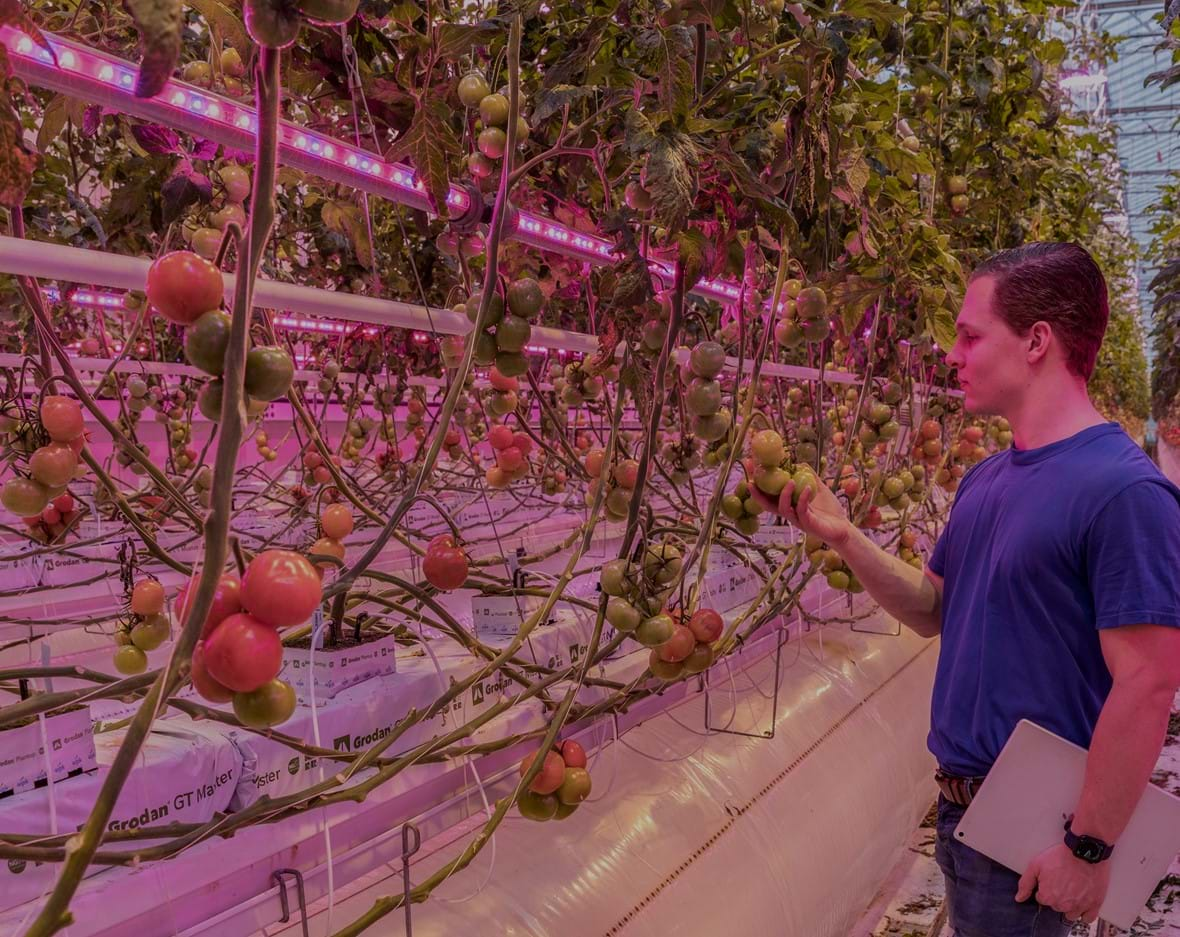On the Finnish west coast, about 125 greenhouse horticulturists grow 70% of all tomatoes eaten in the country. But the long, low-light winters don't make the conditions very tomato-friendly. That is why the Ostrobothnian Union of agricultural and horticultural producers ÖSP started an extensive study at the beginning of 2020 into the factors that determine the growth of a tomato in the greenhouse. Pylot supplied the database platform in which cultivation conditions and in-depth plant data are mostly collected automatically.

‘We now see things we didn't see before’
‘We now see things we didn't see before’
'This research builds on an earlier project we did into the possibilities of making the taste of our tomatoes more responsive to consumer demand', says project manager Irene Vänninen of Natural Resources Institute Finland (LUKE), who is participating in the study. ‘We discovered how much we do not yet know about the many factors that determine the quality of the tomato during the growing process, in other words: how does taste develop? To be able to answer these and many more questions, an enormous amount of data is needed. We then started Project Digitomkku, which is financed by the European Agricultural Fund for Rural Development.'
Pylot selected as data platform
Two tomato growers who grow year-round participate in Project Digitomkku. Information is collected in their greenhouses that should make the relationship between the growing conditions and the development and characteristics of the plant and yield visible. Pylot was selected after a tender to automatically collect all data from the climate computers and the many extra sensors installed. Pylot employees also assisted in the integration of the various data during the first phase of the project. This makes it easy for the researchers at the University of Tampere, a project partner, to obtain useful information for analysis.
Almost all data is automatically collected and stored
Vänninen: 'The first data batch has now been analysed. We were particularly curious about the development of the Brix value (the sugar content) of the tomatoes per week and what factors contribute to this. These factors concern the greenhouse: the temperature, the light intensity, the electrical conductivity (EC) of the substrate, the air humidity and the vapor pressure deficit (VPD). The response of the plant can be seen in its physiology: the amount of sap flow, the diameter of the stem, the growth, the size of the leaves, the amount of leaves and fruits. Pylot collects almost all this information, that of the greenhouse and of the plant, automatically. We only count the leaves and fruits and measure plant growth parameters manually weekly and feed into the database.'
Research sheds new light on natural light
Although the research will run until June 2022, there are already interesting discoveries to report. Vänninen: 'It was of course no surprise that the months with natural light yielded a higher Brix value. But in winter, when natural light is stable for a long time, variation can also be seen in the development of Brix values. So this is caused by other factors. We don't know which ones yet, we are very curious about that.'
The great possibilities of sensors become clear
‘In the meantime, we are learning a lot about the value of the different types of sensors that are available, but which our growers are not yet using in their greenhouses. Take the temperature of the leaf. This is of great importance for the plant's capacity for transpiration and photosynthesis. For example, our grower discovered that when he opened his screens in the morning, the leaf temperature suddenly dropped two to three degrees. We could see that this was a shock to the plant in the sap flow and the functioning of the stomata of the leaf. Now the grower opens his screens very gradually.'
Determining Brix with an near-infrared sensor
“In this process we even adopted a completely new way to determine the Brix value. Not by putting a drop of tomato juice in the Brix refractometer, but by pointing an near-infrared (NIR) sensor at a tomato. We have calibrated this very affordable sensor and are going to use it to determine the sugar, acid and lycopene content in the tomato. This cloud-based sensor can be connected to Pylot's platform thus giving us even more insight into tomato growth. We now see things that we did not see before.”
Contact one of our specialists
Fill in your contact details and questions or remarks. We will contact you soon!